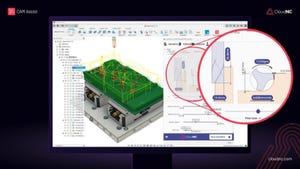General Motors' Hybrid Strategy
February 6, 2006
General Motors' GMC Sierra/Chevy Silverado contractor specials were the first mild hybrids offered in the U.S. Can you provide an update on these vehicles?
We began offering the hybrid Sierra and Silverado for fleet and commercial customers in May 2004. The volume was set at 500 units to get our manufacturing and service needs in line. Then, in October 2004, we began offering the hybrid pickups to retail customers in six states—Alaska, California, Florid, Nevada, Oregon, and Washington—based on consumer demand for hybrid vehicles in those markets.
We built 2,000 of our Silverado and Sierra hybrid trucks for the 2005 model year. For the 2006 model year, availability of the hybrid pickup trucks has been expanded to retail customers nationwide. The projected volume is 3,000 units.
GM has several hybrids planned for future model years. What is the current schedule for the different vehicles and systems?
In 2003, we launched a two-mode full hybrid diesel-electric drive system for buses. We've delivered about 380 GM hybrid propulsion systems for buses to 29 U.S. and Canadian cities.
We are also in the market with a full-size hybrid pickup truck, the GMC Sierra and Chevrolet Silverado. It delivers the highest estimated city fuel economy of any full-size or mid-size pickup truck and offers some additional attributes for consumers such as power generation capability through outlets in the cab and pickup bed to do almost everything from operating power tools at a construction site or running home appliances during a tail-gate party.
We are developing two additional hybrid propulsion systems. A new hybrid system will be offered to consumers in the Saturn VUE in 2006 and in the Chevrolet Malibu in 2007. We think it will be one of the most affordable hybrid choices for consumers.
Also in 2007, we will have the two-mode full hybrid, which we will co-develop with Daimler Chrysler and BMW. It will deliver a 25 percent fuel economy improvement in our popular SUVs, the Chevrolet Tahoe and GMC Yukon.
Can you briefly explain the two-mode full hybrid system?
Essentially, it uses a variable transmission with two electric motors and two hybrid modes of operation. The addition of a second mode to the drive system improves efficiency and reduces the need for exceedingly large electric motors necessary in single mode systems.
The second mode is used mostly when the vehicle is at higher speeds such as highway speed. The two-mode full hybrid delivers seamless dependable power on demand and in a more efficient package, with motors less than half the size of single mode systems.
Is a specific component, such as batteries, the key to lower cost in hybrids? If so what will it take to get the cost in line? If not (besides higher fuel cost) what will it take to make hybrids more acceptable to a broader range of car buyers?
Beginning in mid 2006, we will offer the Saturn VUE Green Line Hybrid for less than $23,000, some $4,000 less than the nearest competitor. Some might say it's the first affordable hybrid SUV.
GM has always stood for customer choice. And we're going to continue to play to that strength in the hybrid market. We're going to cover every major vehicle segment with compelling hybrid versions of many of our most popular vehicles.
Regarding specific hybrid vehicle components, traditionally costs are high for emerging technologies. Right now, hybrid vehicles are an emerging technology. As the technology becomes more mature, the supply base will develop, competitive pressures will increase, consumer demand will grow and costs will decline.
You May Also Like

.jpg?width=300&auto=webp&quality=80&disable=upscale)

